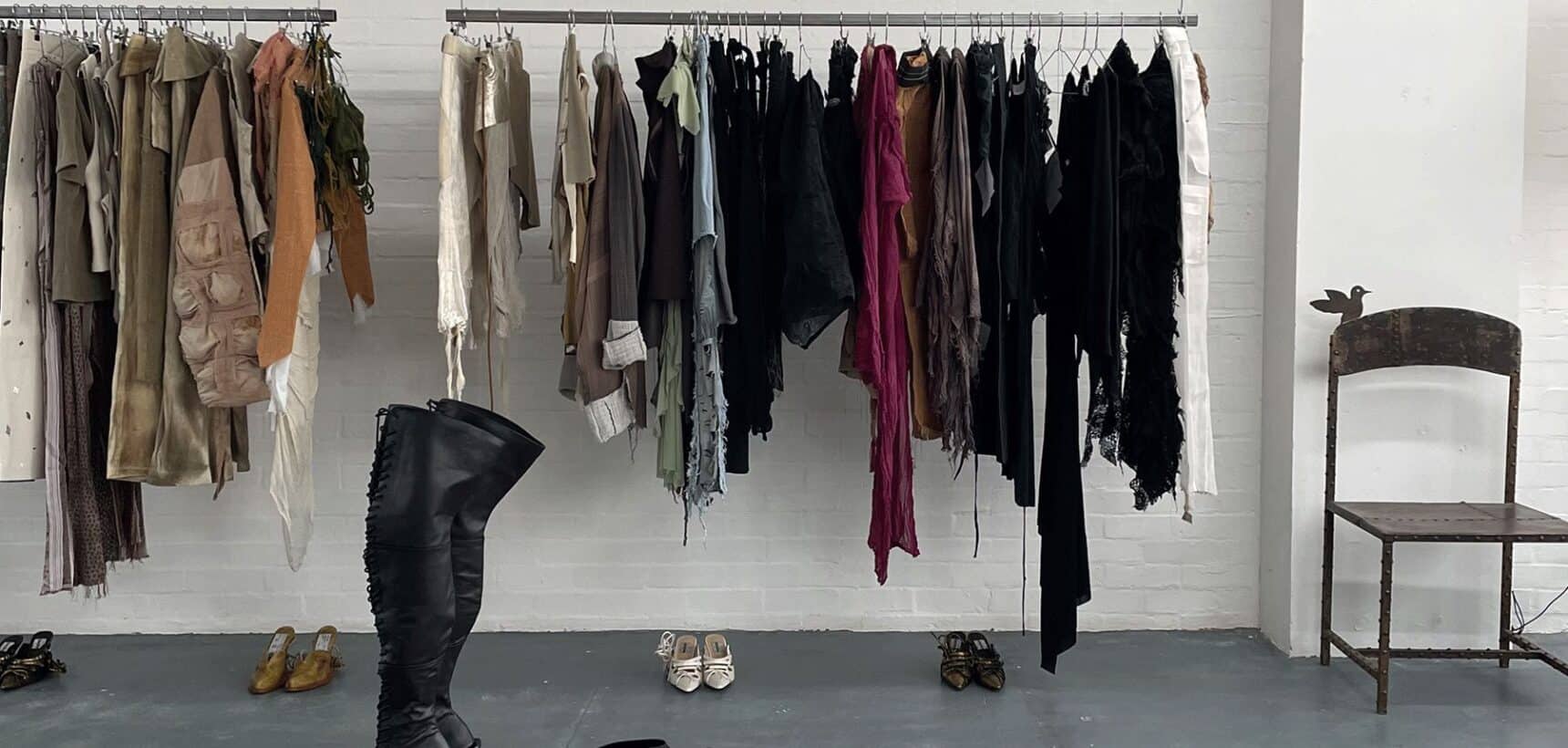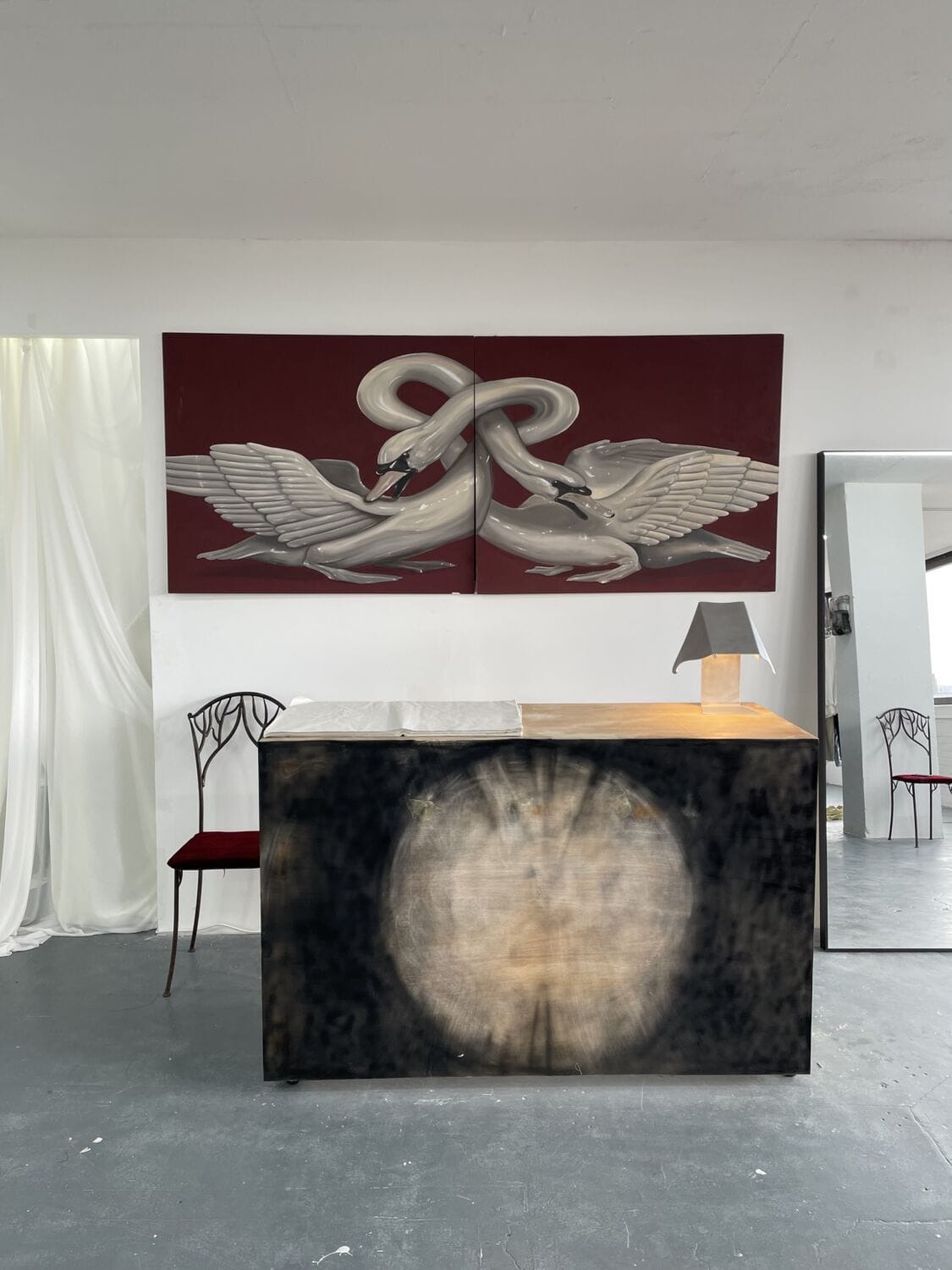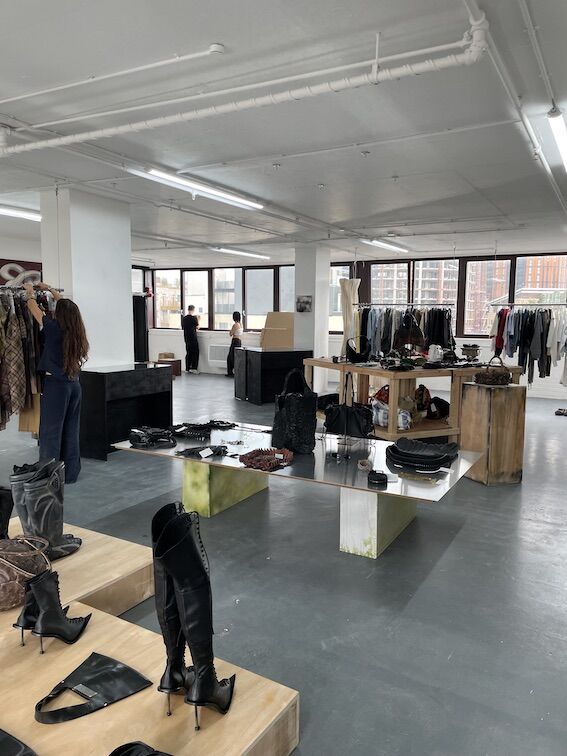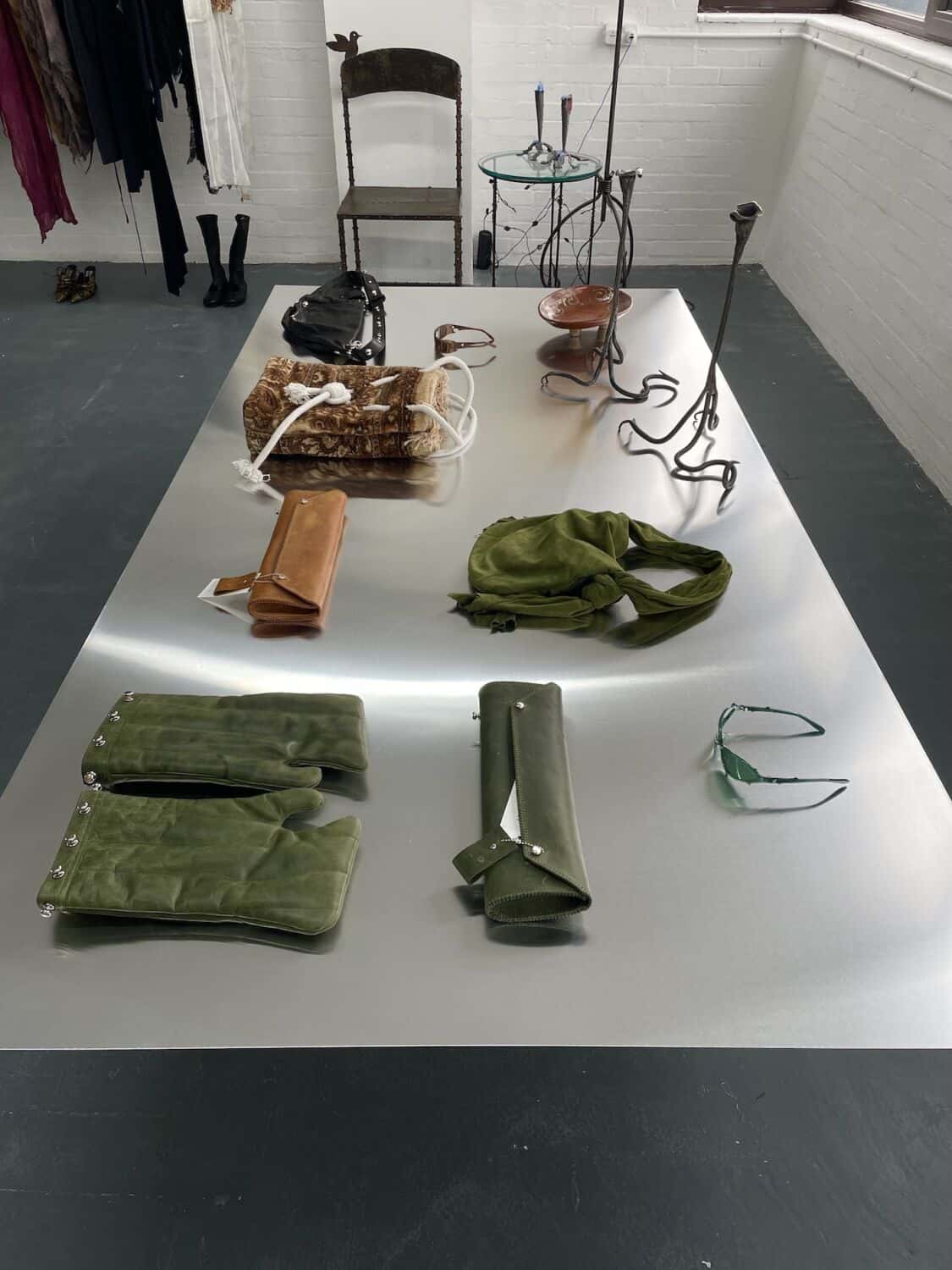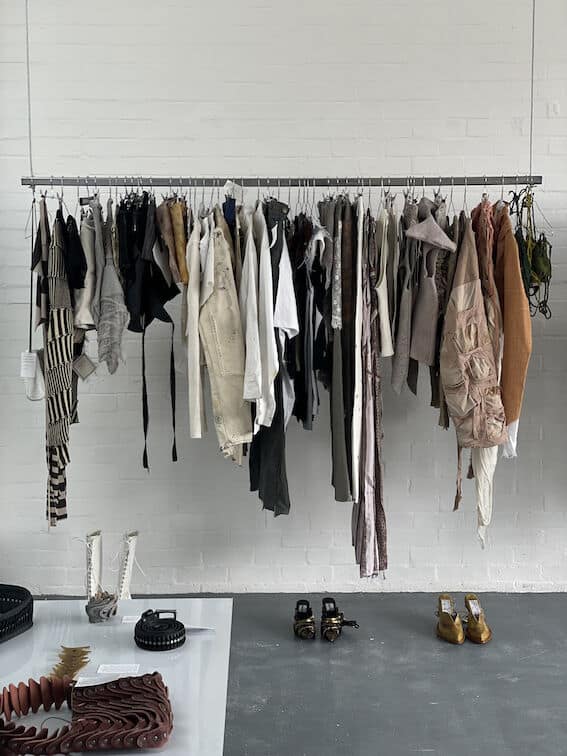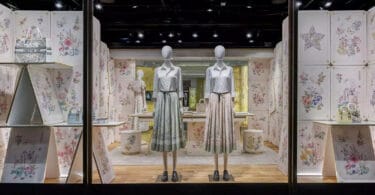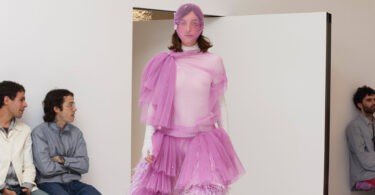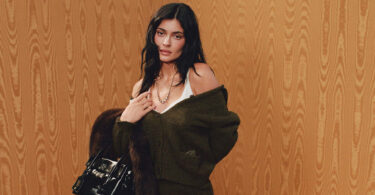Over the past five years, APOC Store – a curated marketplace specialising in independent, upcoming designers – has established itself as the go-to destination for those who embrace an offbeat and experimental style. Centred around “giving creatives full control over what they make and how they sell it,” the platform rebalances the scales of power, putting it back into the hands of the designers, a priority that often slips down the pile when it comes to other marketplaces. Giving its designers space and time to breathe results in stock that might take longer to receive (oftentimes things are made-to-order), but never lacks in quality or individuality. In its comms, the brand, which is run by co-founders Jules Volleberg and Ying Suen, explains, “By working closely with emerging brands, we support designers experimenting with slower, more intentional ways of working.” Stocking designers from around the globe, APOC’s curation is also unrestricted by a specific type of product. Have a gander at its website and you can find bespoke delights that span menswear, womenswear, prints, objects, furniture and art.
Now, for the first time, APOC is opening up its first permanent retail space, giving customers the chance to experience its broad range of wonderfully eclectic pieces first-hand. Having previously hosted pop-ups in cities across Europe, APOC Store London has found a permanent home in Regent Studios in Cambridge Heath. Here, we hear from some of the featured designers to learn more about why platforms like APOC are important to them, the benefit of IRL spaces and what inspires them about being part of a creative community like APOC.
PEDRO TRINDADE
The eponymous brand of London-based Brazilian designer Pedro Trindade, its output focuses on undressing the performance of gender through narrative-focused garments that are sensual in their presentation and insightful in their creation.
1. Why are platforms like APOC important to upcoming designers like yourself?
For us in particular, we love spaces that allow us to produce small quantities of things and work in the way that we believe in. We produce everything in-house and we mainly work with deadstock materials. We don’t delegate the making to factories; that makes it crucial for us to maintain our prices at a certain level contributing to the product that we believe in: a product that uses the best materials, made with quality craftsmanship, doesn’t cut corners to be made in a factory and doesn’t skip steps to be optimised, but rather carries lasting value.
2. What’s the benefit of having IRL spaces to show your work?
I think spaces like this, in real life, are essential. Being able to interact with the product is crucial because there’s only so much that can be translated in through imagery. I believe it’s completely central to the experience of fashion and of the craft of making clothes. The sensory experience is key; to be able to touch, to feel and to see how things make you feel firsthand and not just through an image that conveys a certain perspective. I think it allows the customer to arrive at their own conclusions and their own perspective about the clothes and I think that makes it greater, holistic, more diverse.
3. You recently expanded into womenswear – why did you make this decision now and what can fans of the brand expect from this new expansion?
I believe that fashion is so limitless in what you can do if you understand who you’re doing it for and I think there’s obviously space for all sorts of things to exist and, in that way.. It’s almost redundant the idea of it being gendered. It’s become almost redundant and as an Image it exists less and less. It doesn’t mean as much anymore.
All my collections have always been about gender, gender performances and gender identity, gender roles. Subverting that. I think for a really long time, it was about my experience of how that is conveyed in menswear, because it’s how I perceive things more clearly. It was more firsthand, but I think my fascination with the subject of femininity has always been so great that thinking of only menswear was forcing me to engage with it in a way that felt limiting. Our clothes have always suited both men and women but I guess this is a way of exploiting a broader spectrum of styles.
FEY FEY WORLDWIDE
New York-based Fey Fey Worldwide specialises in clothes that feel both rebellious and soft, utilising loud, eye-catching details and unconventional silhouettes to drive home its intention of finding beauty in contradiction.
1. Why are platforms like APOC important to upcoming designers like yourself?
APOC brings together one-off pieces from emerging designers into a collective space, making it easier for customers to discover new work. It also supports slow-burn creative practices that focus on process over hype.
2. What’s the benefit of having IRL spaces to show your work?
In-person shows are essential for engaging all the senses – texture, movement, and energy. Especially with emotionally weird work like mine, being present physically makes all the difference. It invites slowness, curiosity and dialogue.
3. You’re a New York based label – what are you most excited about bringing your pieces to London?
London, like New York, values narrative and layered character in dressing. I’m excited to see my clothes take on a new role inhabiting different moods, different people.
LEO PROTHMANN
The Rick Owens-approved designer Leo Prothmann uses his brand to explore equestrian themes through tough materials (coined “industrial leatherwork”) and experimental, sculptural silhouettes.
1. Why are platforms like APOC important to upcoming designers like yourself?
Platforms like APOC are essential because they prioritise craft, materiality, and construction over status or popularity within a beautifully curated concept store. It’s refreshing to be part of a niche, responsible and curated collective that connects thoughtful designers with equally intentional shoppers. Everything I produce is made in-house at our London studio, so being part of a platform that values the process as much as the product feels aligned. APOC supports the kind of fashion that’s not just seen, but felt, and that’s rare.
2. What’s the benefit of having IRL spaces to show your work?
As we operate entirely direct-to-consumer, this is our first in-store experience, and it’s exciting. It gives clients the chance to try things on, feel the materials, and appreciate the finishing details that don’t always translate online. We curated a very limited selection of my favourite pieces, available exclusively through APOC for now. Seeing someone interact with a piece in person, how they move in it, how it fits their body, brings a certain intimacy and presence back to the process. It reminds me why I make things by hand in the first place.
3. What inspires you the most about being part of a creative community like APOC?
It’s made me even more mindful of where and how my work is presented. Being surrounded by designers who share a commitment to thoughtful production and creative integrity has inspired me to stay selective, while still open to new conversations. I don’t overproduce or outsource, especially in today’s saturated and volatile market, so being part of a platform like APOC that values that approach is affirming. It’s not just about visibility but alignment. This is just the start, and we’re looking at how this considered energy can evolve into new materials, formats or unexpected categories in the near future.
EGNARTS
Seoul-based brand Egnarts is an expert at making you look twice. Specialising in garments that reconfigure traditional silhouettes, expect to find shirts with collared hoods, trousers that trap other garments within an organza casing and caps with a wallet-inspired brim.
1. Why are platforms like APOC important to upcoming designers like yourself?
Platforms like APOC help new designers reach a wider audience without having to compromise their direction. It’s not just a place to sell – it’s a space that respects experimentation and independent perspectives.
2. What’s the benefit of having IRL spaces to show your work?
Physical spaces allow people to experience the texture, structure, and weight of a garment directly. Especially for work like ours, where interpretation is open in terms of form and function, being able to see and feel it in person communicates much more.
3. You’re a Seoul-based label – what are you most excited about bringing your pieces to London?
We’re curious to see how our work is received in a different cultural context. London is a place where diverse perspectives coexist, so we’re looking forward to seeing how our ideas might be read in new ways.
SANS PENG
London-based Sans Peng creates high-end pieces with the right amount of humour splashed in. His one-of-a-kind pieces range from trouser-lined bags crafted from vegan leather to mule heels with a toe so sharp it would make Rumpelstiltskin weep.
1. Why are platforms like APOC important to upcoming designers like yourself?
Platforms like APOC are vital because they offer visibility, autonomy and community. As an emerging designer, it’s often difficult to find spaces that respect experimental work while providing a real commercial infrastructure. APOC understands the value of alternative design narratives and gives us the freedom to present our work without needing to compromise on concept or aesthetic. It’s more than just a sales channel – it’s a support system.
2. What’s the benefit of having IRL spaces to show your work?
Physical spaces allow people to engage with the work beyond just visuals. My designs often explore texture, tension and layering – things that are hard to fully capture online. An IRL environment invites touch, movement, and spontaneity. It also creates space for conversation, connection and energy exchange, which can be just as important as the garments themselves.
3. You use a lot of unorthodox silhouettes in your work – bags with waistbands peeking out the top, shirts poking out from hoodies – where do you get your inspiration from?
A lot of my inspiration comes from the overlooked and the in-between – moments of dressing, undressing, layering, or even how clothes hang when they’re not being worn. I’m drawn to garments that misbehave a little, or that feel like they’re in transition. There’s a kind of quiet tension and intimacy in those states that I like to explore and amplify through silhouette and construction.
I’m also interested in hybrid aesthetics – blending formal and casual elements to create something that resists clear definition. That mix creates friction, and for me, that’s where new ideas start to emerge.
LIZA KEANE
Named as one of the newcomers to the British Fashion Council‘s 2025/26 NewGen initiative, Liza Keane is one to watch. Recognised for her gothic, brazen graphics that include a spiky font spelling out “hungry hole” across garments that look half melted, to leather bras with nipples printed on true to size, Keane is carving out her own space, and making no apologies as she does it.
1. Why are platforms like APOC important to upcoming designers like yourself?
I think it’s bigger than just shelf space. APOC offers cultural alignment. They understand that some fashion isn’t built for volume or trend cycles, but for depth and integrity. For designers like me, who work from instinct and philosophy rather than seasonal aesthetics, they offer a home for that difference. The platform creates space for sharp-edged, small-scale work that’s rooted in something personal. And most importantly, it connects me to a customer who feels the work, not just consumes it.
2. What’s the benefit of having IRL spaces to show your work?
So much of my work is about proximity. The texture of leather that’s already lived a life, the cuts that follow the body’s shape, the finishings, the weight – these are details that need to be experienced up close. But it’s not just about how the garment looks; it’s about what shifts inside the wearer when they put it on. I like to think the pieces carry a kind of psychological charge. I see people move differently once they’re wearing them: a different energy. That kind of transformation only really happens in person.
3. You’ve just been named as one of this year’s BFC NewGen recipients — how do you hope to grow your brand with this new support from the BFC?
Receiving NewGen feels like a rare kind of affirmation. I already know what Liza Keane is. What I need now is the infrastructure to protect it while I scale. NewGen gives me access to strategic mentorship and the opportunity to present on a platform like London Fashion Week without compromising the integrity of the work. Over the next two years, my focus is on slow, deliberate steps toward sustainable growth. Expanding production capacity, growing DTC, and embedding the brand more deeply into the fashion and cultural psyche. For me it’s not about getting bigger fast. It’s about getting sharper, deeper and more enduring.
Photography courtesy of APOC Store.


